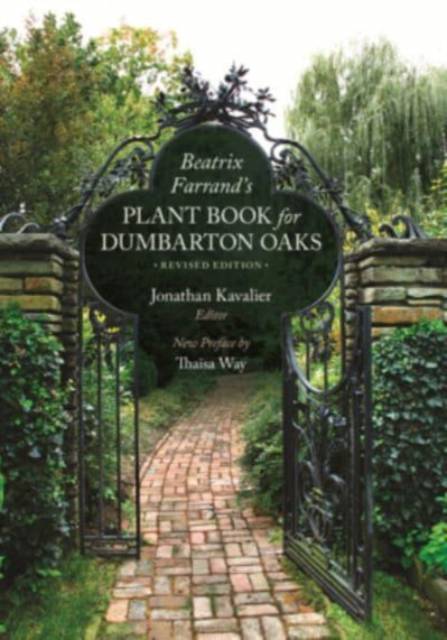
- Afhalen na 1 uur in een winkel met voorraad
- Gratis thuislevering in België vanaf € 30
- Ruim aanbod met 7 miljoen producten
- Afhalen na 1 uur in een winkel met voorraad
- Gratis thuislevering in België vanaf € 30
- Ruim aanbod met 7 miljoen producten
Zoeken
Omschrijving
The Plant Book for Dumbarton Oaks was prepared by Beatrix Farrand as a resource for those charged with maintenance of the Dumbarton Oaks Gardens following their acquisition by Harvard University in 1941. To commemorate the 100th anniversary of the Gardens, and in conjunction with the Farrand's 150th birthday, this new edition contains updated commentary and new contemporary and historical photography, showing the gardens in all their current beauty and as they were conceived and created. Accompanying the original plant lists, Farrand's text carefully explains the reasoning behind her plan for each of the gardens and shares how each should be cared for in order that its basic character should remain intact. While she provides suggestions for alternative plantings, strictures concerning pruning and replacement, and exposition of the overall concept that underlies each detail, Jonathan Kavalier's thoughtful commentary provides context for changes that have affected new plant choices for the gardens, such as new, disease resistant cultivars and recognition that some plants are now considered invasive. This book is an excellent companion to a stroll through the garden for any lover of plants and landscape architecture, and any fan of Farrand's garden design.
Specificaties
Betrokkenen
- Auteur(s):
- Uitgeverij:
Inhoud
- Aantal bladzijden:
- 280
- Taal:
- Engels
- Reeks:
Eigenschappen
- Productcode (EAN):
- 9780884024811
- Verschijningsdatum:
- 19/07/2022
- Uitvoering:
- Paperback
- Formaat:
- Trade paperback (VS)
- Afmetingen:
- 178 mm x 251 mm
- Gewicht:
- 680 g

Alleen bij Standaard Boekhandel
+ 94 punten op je klantenkaart van Standaard Boekhandel
Beoordelingen
We publiceren alleen reviews die voldoen aan de voorwaarden voor reviews. Bekijk onze voorwaarden voor reviews.











